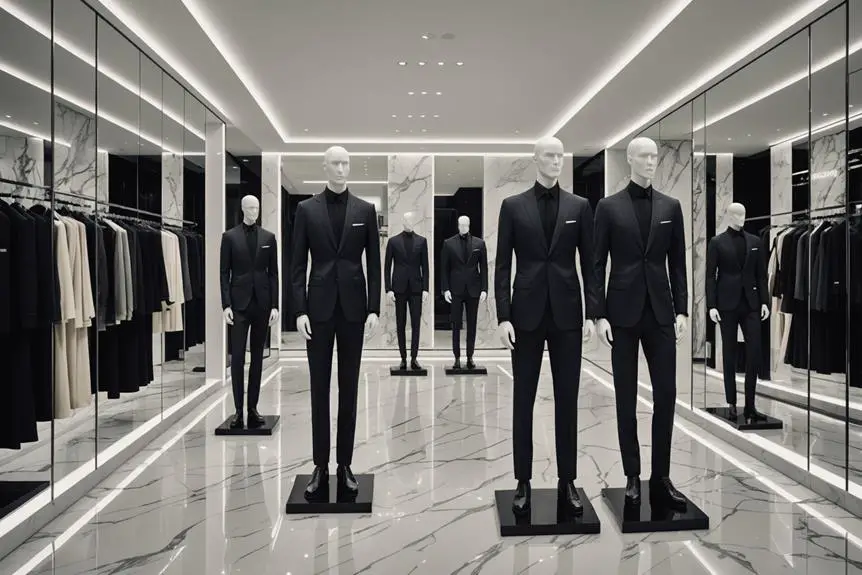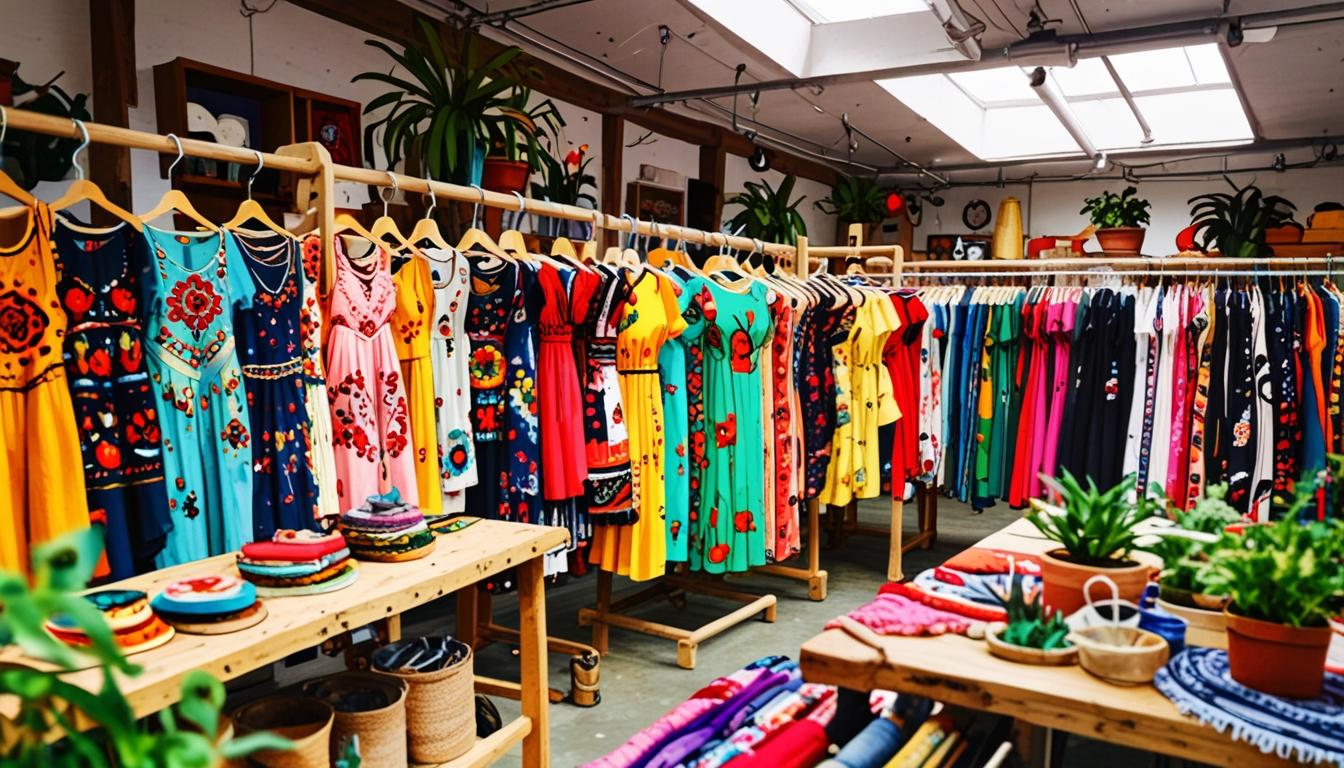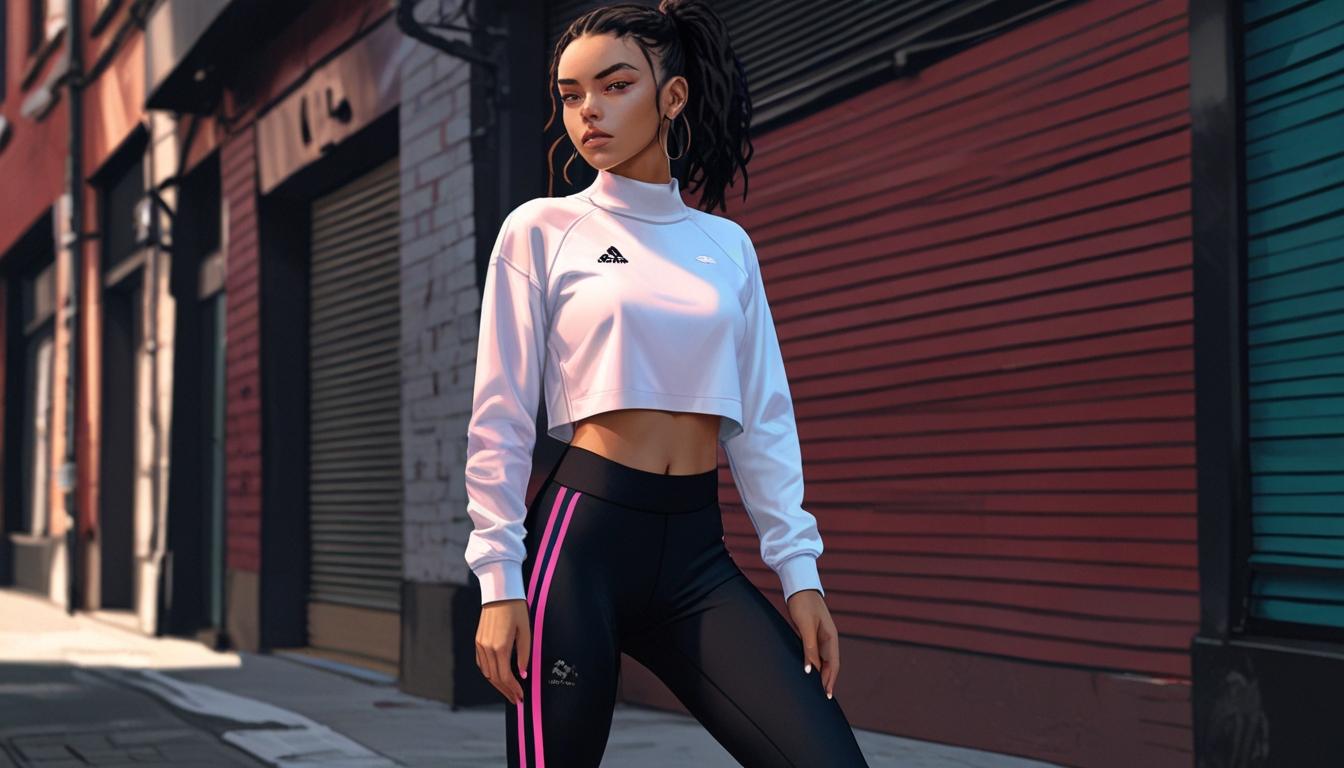So, who owns Hugo Boss? Well, it's a mix! About 83% of the shares are floating out there, meaning anyone can grab a piece of the stylish pie. Major players include Zignago Holding with 9.03% and PFC S.r.l. at 5.77%. Others, like Janus Henderson Investors and Black Creek Investment Management, chip in too. With more shareholders, you get diverse ideas, keeping the brand fresh and exciting! Pretty cool, right? Plus, they've got ambitious plans to up their revenue game, which means even more stylish outfits for you! Stick around, and you'll discover more about their exciting journey!
Company Background

Hugo Boss AG, founded in 1924 by Hugo Ferdinand Boss in Metzingen, Germany, has evolved from producing work uniforms to becoming a prominent name in luxury fashion. Isn't that cool? Originally, it focused on functional clothing, but now, it's all about high-quality mens fashion. With two main brands, BOSS and HUGO, the company targets different styles and audiences, offering everything from sleek suits to casual wear.
You might be surprised to learn that as of 2023, Hugo Boss AG reported global sales of around €4.2 billion! That's quite a leap. Their brand portfolio includes BOSS Black, BOSS Orange, BOSS Green, and BOSS Blue, along with fragrances and accessories that just scream luxury.
But here's something even more important—they're committed to sustainability! Hugo Boss AG is continuously working on bettering its environmental and social responsibility practices. They're not just about making stylish clothes; they want to do it the right way. So, when you think of luxury fashion, remember that Hugo Boss is not only about looking good but feeling good about your choices too!
Shareholder Structure
The shareholder structure of Hugo Boss AG reveals an impressive 83% free float, which enhances market liquidity and facilitates trading for investors. This means you've got plenty of opportunities to buy and sell Hugo Boss shares without feeling too restricted. With a total of 58,137,164 free float shares, both institutional and retail investors are drawn to this stylish brand.
But wait, there's more! Major shareholders like Zignago Holding S.p.A., which holds about 9.03%, and PFC S.r.l. with 5.77%, play a significant role in the company's governance. Other key players include Janus Henderson Investors at 4.15% and Black Creek Investment Management at 3.07%. Isn't it fascinating how these diverse interests can shape the strategies and decisions of Hugo Boss?
With such a robust free float, the company can easily attract fresh ideas and investment. This structure not only keeps the trading lively but also guarantees that various voices are heard in the boardroom. So, whether you're a seasoned investor or just dipping your toes in the market, you can feel excited about what's happening with Hugo Boss!
Financial Performance

With a solid shareholder structure supporting its operations, Hugo Boss has achieved remarkable financial performance in recent years. In 2023, the brand reported an impressive revenue of around €4.2 billion, hitting its revenue target two years ahead of schedule. That's no small feat, right?
When you look at sales growth, it's clear Hugo Boss is on a roll. In the EMEA region, sales jumped from €1.8 billion in 2019 to €2.56 billion in 2023. Talk about growth! The Americas saw similar success, with sales climbing from €560 million to €955 million over the same period. Asia/Pacific didn't lag behind either, increasing from €438 million to €576 million.
But wait, there's more! Licensing opportunities for Hugo Boss are also looking bright, with license revenue rising from €83.71 million in 2019 to €104 million in 2023. Isn't it exciting to see a brand expand and thrive like this? With such strong financial performance across different regions, you can see why Hugo Boss is a name to watch in the fashion world. Keep an eye on them; they're just getting started!
Brand Strategy
Brand Strategy
Focusing on a dynamic two-brand strategy, Hugo Boss effectively caters to diverse customer needs in the fashion market. With BOSS appealing to those after self-confident business and leisure styles, and HUGO targeting trendsetters, it's a win-win for fashion lovers everywhere! Here's how they do it:
- Strong Brands: BOSS has sub-brands like Boss Black and Boss Orange, covering everything from formal suits to casual wear. You'll find something for every occasion. This approach reflects Hugo Boss's commitment to precision tailoring and evolving brand identity over the decades, ensuring they remain relevant in the competitive fashion landscape. exploring brand identity
- Trendy Offerings: HUGO's unique cuts and progressive styles keep you ahead in men's fashion, making it easy to stand out from the crowd.
- Sustainability Focus: Their growth strategy includes a commitment to CO2 neutrality by 2050 and initiatives like the Hugo Boss Pre-Loved resale website. Who doesn't love fashion with a conscience?
Recent Developments

Hugo Boss is making waves in the fashion industry with its ambitious plans and strategic investments. In 2023, the brand hit a major milestone by upping its revenue target to €5 billion, reaching its original goal two years early! How's that for success? To support this growth, they've poured €100 million into a new distribution center near Stuttgart and opened the Hugo Boss Digital Campus in Gondomar, Portugal. These moves are all about improving their operational capabilities.
But that's not all! In 2022, they launched the Hugo Boss Pre-Loved resale website, promoting sustainability and a circular economy. Isn't it great when fashion meets eco-friendliness? Plus, with Marco Falcioni stepping in as the new creative director, the brand is on a path to exciting brand revitalization and innovative designs.
Hugo Boss isn't just focused on profits; they're committed to reaching CO2 neutrality by 2050. They even joined the ZDHC Foundation to eliminate harmful substances in their production. So, as you can see, Hugo Boss isn't just about looking good; they're making the world a better place too!
Frequently Asked Questions
Who Is HUGO BOSS Owned By?
When exploring Hugo Boss ownership, you'll find a corporate structure that combines significant free float shares with influential stakeholders. This mix impacts its brand history, market position, and financial performance in the competitive luxury fashion industry.
Who Is HUGO BOSS in Real Life?
Hugo Boss, a significant figure in the fashion industry, transformed luxury brand evolution through innovative marketing strategies, sustainability initiatives, and celebrity endorsements, while expanding retail presence and exploring a distinctive design philosophy that resonates globally.
Why Is HUGO BOSS Two Brands?
Hugo Boss created two brands to enhance brand identity and target diverse audiences. This strategy reflects fashion evolution, emphasizing product differentiation through luxury fashion and designer collaborations, strengthening marketing strategies aimed at distinct consumer preferences.
Is BOSS and HUGO BOSS the Same Brand?
BOSS and HUGO BOSS aren't the same brand; they embody distinct brand identities. Their marketing strategy focuses on product differentiation, shaping consumer perception, enhancing retail presence, and reflecting their historical evolution and innovative brand collaborations in luxury fashion.
Conclusion
So, there you have it! Hugo Boss is owned by a mix of shareholders, and they've been doing pretty well in the fashion world. With some exciting strategies and recent updates, the brand's definitely got its eye on the future. Isn't it amazing how a company can evolve? Whether you love their style or not, you can't deny they've got a flair for making things happen. What's your favorite Hugo Boss look?




